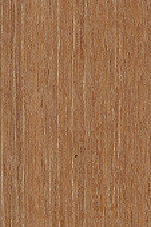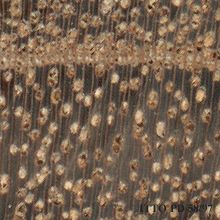
DARK RED MERANTI (Shorea albida)
Trade Name
Dark red meranti
Scientific Name
Shorea albida Sym.
Family
DIPTEROCARPACEAE
Common Names
Alan bunga (Sarawak); Seringawan (Brunei Darussalam); Alan (Malaysia); Alan-paya (Sarawak); Red selangan (Malaysia); Meraka (Malaysia); Selangan merah (Sarawak); Alan-batu (Malaysia)
Description Of The Tree
Botanical Description
It is a medium-sized to very large tree up to 70 m tall, with a long bole up to 190 cm in diameter. The buttresses are prominent, up to 5 m high.
Natural Habitat
It is a characteristic component of the threatened peat-swamp forests, sometimes occurring locally on podzolic soils in heath forest. An area of forest covering about 400,000 ha in Brunei may now contain the largest remaining undisturbed stand.
Natural Distribution
It occurs in large pure and mixed forest in the peat swamps of Sarawak and Brunei and occasionally in small coastal concentrations.
Non Timber Uses
Occasional brittle heart is reported for this species.
Wood Identification
Anatomic Description Of Wood
Wood diffuse porous. Vessels exclusively solitary (over 90%). Tangential diameter of vessel lumina 200 micras or more (large). Vestured pits. Vessels per mm2 5 to 20. Simple perforation plates. Intervessel pits medium, 7 to 10 micras. Apotracheal axial parenchyma diffuse and/or diffuse in aggregates. Paratracheal axial parenchyma scanty and/or vasicentric. Axial parenchyma aliform. Axial parenchyma confluent. Prismatic crystals in non-chambered axial parenchyma cells. Axial parenchyma bands 4 to 10 rays per mm (medium). Rays and/or axial elements irregularly storied. Larger rays more than 4 seriate. Body ray cells procumbent with mostly 2 to 4 rows of upright and/or square marginal cells (Kribs-II). Body ray cells procumbent with one row of upri
-
 Wood Macro Photo Tangential Plane
Wood Macro Photo Tangential Plane
-
 Wood Micro Photo Of Transversal Section
Wood Micro Photo Of Transversal Section
Availability
Cites Status
Unrestricted
General Wood Description
Color
The sapwood is distinct, varying from greenish red to light gray-brown. The heartwood is deep red-brown.
COLOR INDEX (1=Black, 7=Light yellow,white)
4
Grain
It is irregular, frequently interlocked.
Texture
The texture is from medium to coarse. Tyloses are abundant.
Natural Durability
The stock is liable to termite and marine borer attack.
Natural durability index (1= Very high durability, 7=Vey low durability)
6
Resistance To Impregnation
The heartwood is reported to be resistant to preservative treatment, but the sapwood is readily treatable.
Wood Physical Properties
Basic Density or Specific Gravity (O.D. weight/vol. green) (g/cm³)
0.64
Air-dry Density (Weight and volume at 12%MC) (g/cm³)
0.71
Total shrinkage Tangential (Saturated to 0%MC) (%)
9.8
Total shrinkage Radial (Saturated to 0%MC) (%)
3.8
Drying Defects
Ease of Drying: Drying is rather slow and sometimes difficult to perform. Drying Defects: Risks of checks and distortions. Kiln Schedules: Schedule proposed as a reference by comparison with well known species taking into account to the general technological behavior of this species.
Recommended Dry Kiln Schedule
UK-F; JP-37
Dimensional stability ratio (Total Tangential Shrinkage %/Total Radial Shrinkage %)
2.6
Wood Chemical Properties
Wood Mechanical Properties
Bending Strength (MOR),12%MC (kgf/cm²)
1107
Stiffness (MOE) 12%MC (kgf/cm²)
140948
Compression parallel to fiber 12%MC (kgf/cm²)
542
Shear strength radial 12%MC (kgf/cm²)
109
Janka hardness (side) 12%MC (kgf)
422
Workability
Sawing
Sawing is easy if it is free of resin.
Rotary Veneer Cutting
Lamination of this species is possible.
Sliced Veneer
Lamination of this species is possible.
Blunting Effect
Resin streaks cause blunting of the saw-teeth.
Machining
Grain tends to pick up on planing when woolly surfaces are present.
Planing
Planing operations are rather easy.
Boring
Boring operations are rather easy.
Nailing
It splits on nailing. It needs pre-boring.
Gluing
Gluing of this species is easy.
Sanding
This species is reported to be easy to sand.
Finishing
Filling is recommended.
Staining
This species is reported to be easy to stain.
Polishing
Polishing of this species is reportedly easy.
REFERENCED USES
End Uses Summary
EXTERIOR GENERAL, HOUSING GENERAL, flooring, FURNITURE AND CABINETS, PLYWOOD AND VENEER, CONTAINERS, truck bodies, truck flooring, NAVAL CONSTRUCTION, OTHER AND MUSICAL INSTRUMENTS, handicrafts, paper
Exterior General
- 1 - Tabela de resultados de ensaios fisicos e mecanicos
General Housing
- 10 - Silica in Timbers
Flooring
- 14 - Handbook of Hardwoods
Furniture Cabinets
- 21 - Tropical timbers of the world. Part III-Southeast Asian and Oceanian Species.
Panels, Veneers
- 25 - Directory of Timber Trade Malaysia
Truck Body
- 53 - Timbers of the New World
Truck Flooring
- 54 - Bulletin of the Government Forest Experiment Station N.157: Identification of Tropical Woods
Shipbuilding
- 55 - Tropical Timber Atlas of Latin America
Handcraft
- 66 - Maderas latinoamericanas. VII. Caracteristicas anatomicas. propiedades fisicomecanicas, de secado, y tratabilidad de la madera juvenil de Cordia alliodora (Ruiz & Pav. Oken.)
Paper
- 82 - Compilation of Data on the Mechanical Properties of Foreign woods (Part 2) Central and South America.
Please Provide Information To View Producer Information